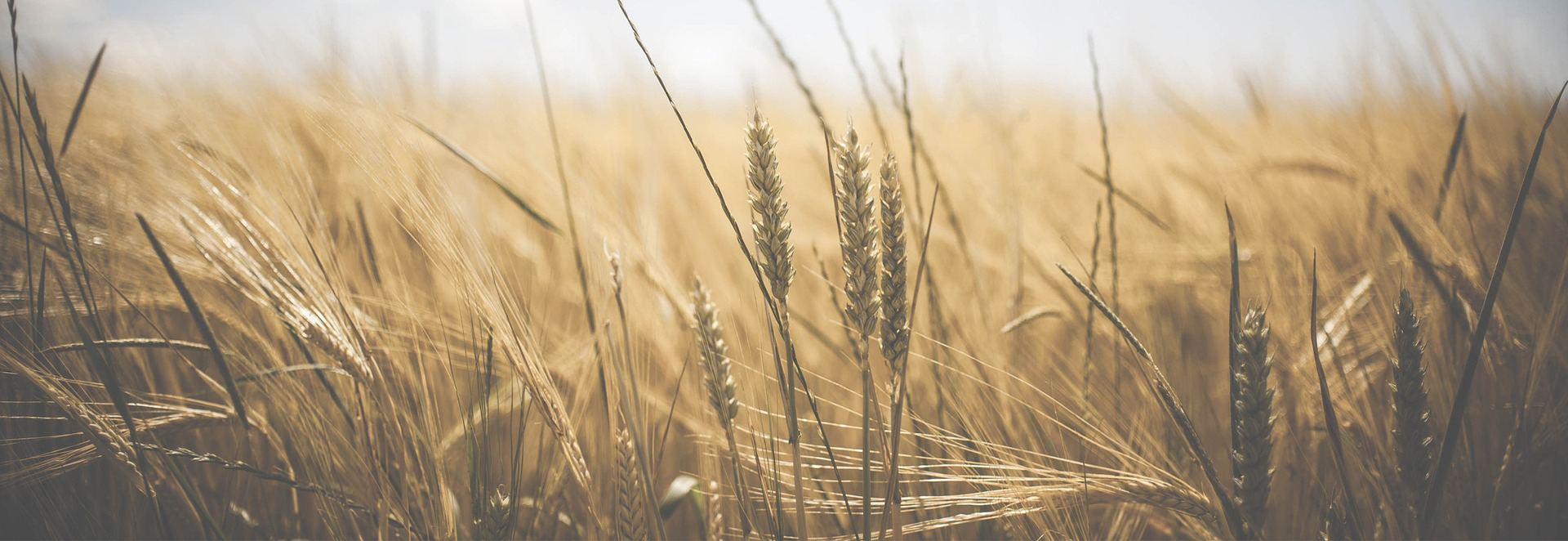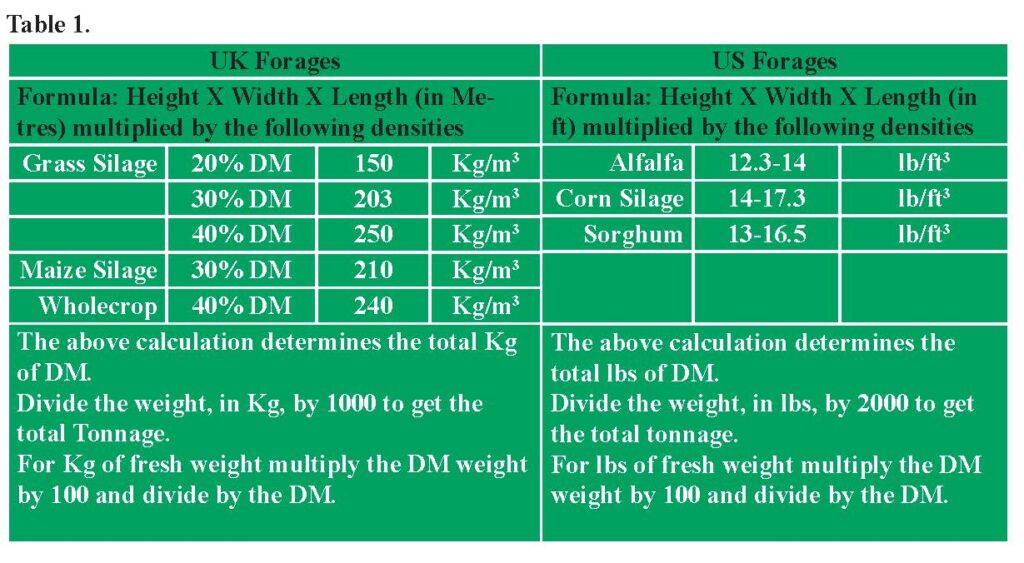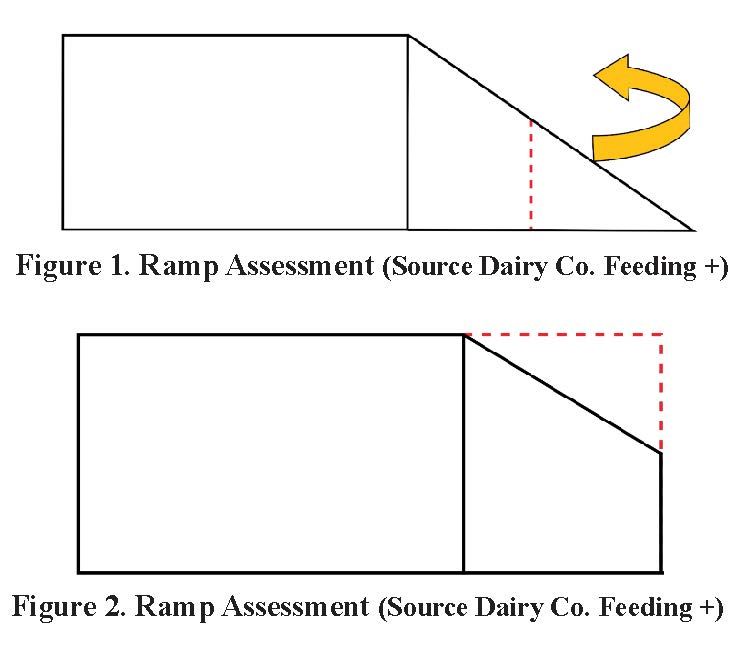
By Grace Thomas, M.Agr.Sc., P.A.S.
As forage makes up over 50% of most dairy cow rations, once harvesting is finished it is a good idea to complete an inventory of all forage on the farm. This will not only determine the level of forage that is available and predict any potential shortfalls, but it will also help with the allocation of the most suitable forage for each animal in the herd. Any deficits in feed should be identified early to help alleviate potential problems that could arise later on in the year. The steps outlined in this article will assist in determining supply and demand what can be done if a deficit is found.
Many online calculators will help calculate the available tonnage contained in a silo/pile, these are very useful and ought to be used when there are numerous silos to be calculated or if the silage is contained in an upright silo. The density of silage in an upright silo varies from top to bottom, with the bottom having an increased density. This variation in density, which is influenced by DM and silage type, makes it harder to calculate the remaining volume contained in an upright silo. Whether the silo is top or bottom-unloading also plays a factor in the volume left in the silo. For top-unloading silo’s, the silage that has been fed has a lower density than the silage left in the silo, similarly, the silage remaining in a bottom unloading silo will have a lower density than the silage that has been fed.
On-farm volume calculations for horizontal silos use the formulas shown in Table 1 and will give a good estimation of the forage dry matter (DM) available. The numbers may be used as a guide  but it must be noted that tall clamps and/or poorly filled clamps are less dense and may contain 10% less forage. To get an accurate picture, the silage in the ramp and the dome of the pit must be also accounted for. A simple method for measuring the amount in the ramp is to halve the length of the ramp and add it to the non-ramped clamp (Figure 1 & 2).
but it must be noted that tall clamps and/or poorly filled clamps are less dense and may contain 10% less forage. To get an accurate picture, the silage in the ramp and the dome of the pit must be also accounted for. A simple method for measuring the amount in the ramp is to halve the length of the ramp and add it to the non-ramped clamp (Figure 1 & 2).
To get a good guide of silage contained in bales, weigh a couple of bales from each batch. This will give a reliable average fresh weight for each bale. Sample a couple of bales from each batch, to get an idea of average DM of the bales. This weighing helps take the guesswork out of determining the quantity in each baled forage.
Having a detailed analysis of all on-farm forages will help in the allocation of the most suitable forage for each animal in the herd. For example, high-quality forage is utilized best by fresh cows, if fed to stale or dry cows, it may cause them to become over-conditioned. Knowing the quality will also be helpful if there is a vast difference in forage quality on the farm, this will help in deciding if a mixture of forage qualities can be fed throughout the year, so as not to be left with only poor quality late in the season. Knowing the feeding value of all on-farm forages will also help in determining the feeds that need to be purchased. Likewise, the analysis of the forages will help in the ration formulation for the feeding period.
Once the forage nutrient analysis and supply on-farm are known, the on-farm demand needs to be calculated. Forage dry matter use can be calculated per animal per day from the respective dry, milking and heifer rations multiplied by the number of animals on each ration times the number of days in the feeding period.
If a shortfall in forage has been established on-farm, there are several options available to help overcome this problem, some of which are listed below.
Whilst buying in forage is a good option, care must be taken that the purchased forage is of suitable quality for your herd and that it is not overpriced. Do not panic buy forage; if possible obtain a full analysis of the forage before purchase. This will help determine if the purchase is cost-effective. In some cases, it might be more cost-effective to help fill the forage deficit with dry feeds or grain. For example, Grass silage testing 20% DM fed at 10Kg provides the cow with 2Kg DM, feeding 2.2kg of Soya Hulls would provide the same DM intake combined with higher energy.
Forage might not always be available for purchase due to limited countrywide stocks, in cases like this, the gap in DM intake for the animal will need to be filled with alternative feedstuffs. Current silage type and quality should be considered before alternative feeds are purchased. Some farms are maybe able to bridge the forage gap by simply feeding extra parlor cake or cereal in the TMR without seeking alternative fiber sources. There are so many different options available that it is best to seek advice before purchasing. It is important not to compromise rumen health when looking at alternative forage options. Fiber and starch levels should not deviate from the recommended guidelines, otherwise, it may be to the detriment of the animal’s health.
All options need to be measured carefully when buying in extra feed and forage; the extra cost of storage and handling also needs to be considered. Diets of all animals on-farm need to be reviewed and reformulated to find what works best for the herd.
Cows that have mastitis, are lame or are low-producing still need to be fed, however, these problem cows are using up vital silage supplies and are not producing a good return on their investment. A reduction in cow numbers by culling will help take the pressure off silage demand and releases up silage for the productive, profitable cows.
Keep the pit-face clean and only expose 3 days of feed at a time. This minimizes the chances of secondary fermentation which would lead to unnecessary waste. In warm weather it is best to remove 2-4 inches of feed per day for alfalfa, 4-6 inches for corn silage, in cooler weather 2 inches a day for both corn and alfalfa should be adequate. The use of Silo-King® on forages not only helps improve the quality and digestibility of the forage, but it also provides a stable fermentation that helps prevent secondary fermentation at the pit-face.
Agri-King’s enzyme products such as Zym-O-Factors® and Ru-Mend® help to convert the indigestible fiber in feed to glucose (energy). This energy can be used for both maintenance and increased milk production. These products can help unlock the feed potential in your forage, it also increases nutrient absorption, which can result in better feed efficiency and higher fertility rates.
There is no single strategy to deal with a shortage of forage on the farm. A combination of actions is required to help deal with the problem, every farm is different and each farm will need to develop their own plan of action. Talk to your Agri-King Area Manager today to help develop a feed plan for your winter period. AK
Reference: Feeding+ Section3 -Planning Your Feeding, DairyCo Feeding+, dairy.ahdb.org.uk.